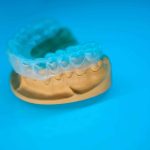When it comes to travelling with your little ones, your priority will always be their safety. One crucial aspect of this is ensuring that your child’s car seat is fitted correctly. A poorly fitted car seat can significantly reduce its effectiveness in the event of an accident. In this article, we aim to provide you with the necessary knowledge on how to install a child car seat in your vehicle successfully. We will cover key areas including correct seat fit, the importance of rear-facing seats for babies, understanding seatbelt and Isofix fittings, and finally, the role of booster seats for older children.
Ensuring Correct Seat Fit
A common mistake many parents make is selecting a car seat that does not fit their child properly. The right fit will depend on your child’s age, weight, and height. A suitable car seat should hold your child firmly in place, with little room for movement.
Additional reading : What are the benefits of hybrid cars over traditional gas vehicles in the UK?
When placing your child in the seat, make sure the harness is tight enough. You should not be able to pinch any slack between your fingers. The harness clip should be at your child’s armpit level, and the straps should lay flat, without any twists.
Another crucial point to check is the headrest position. It should be adjusted so that it sits just above your child’s shoulders. If it is fitted too low or too high, it may not provide effective support in a collision.
Topic to read : How to restore a vintage car in compliance with UK regulations?
Importance of Rear-Facing Seats for Babies
The next important aspect to consider is the direction your child’s seat is facing. For infants and babies, a rear-facing seat is highly recommended. These seats provide better support for the baby’s head, neck, and spine in case of a sudden stop or an accident.
In the UK, it is a legal requirement to keep your child in a rear-facing seat until they are 15 months old. However, it is generally recommended to keep your baby rear-facing for as long as possible, as long as they fit within the seat’s weight and height limits.
To make sure the rear-facing car seat is properly installed, check the seat’s angle. Most seats have an indicator showing the correct angle for installation. The seat should recline enough to keep your baby’s head from flopping forward.
Understanding Seatbelt and Isofix Fittings
When it comes to securing the car seat in your vehicle, there are two primary methods: using the vehicle’s seatbelt or an Isofix fitting.
The seatbelt method involves threading the car’s seatbelt through the correct path on your child’s car seat. It’s crucial to make sure the belt sits tightly against the car seat with no slack. Always check the car seat instructions to ensure you’re threading the belt through the correct path.
Isofix fittings, on the other hand, are built-in points in your car where you can directly connect your child’s car seat. These provide a more secure and straightforward way of fitting a car seat, as they firmly attach the seat directly to the car’s chassis.
To install an Isofix seat, simply align the Isofix connectors on the base of the car seat with the Isofix points in your car, and push the seat in until it clicks into place. Most Isofix seats also have a third, top tether point or a support leg for extra stability.
Booster Seats for Older Children
For older children, usually those weighing 15kg or more, a booster seat becomes necessary. These seats ‘boost’ your child up in the car, so the seat belt fits them correctly.
The seatbelt should run diagonally across your child’s chest, between the shoulder and the neck, and then across the lap. It should not be on their neck or their stomach.
A high back booster offers more protection by providing side impact protection and a guide for the car seatbelt. However, backless boosters are still legal and safe to use as long as they are correctly fitted.
To install a booster seat, position it on the vehicle seat where you want your child to sit, then thread the seatbelt through the guides and buckle it up as usual. Ensure the belt is not twisted and sits snugly against your child’s body.
Installing a child car seat correctly is crucial to ensure your child’s safety on the road. By understanding the basics of seat fitting, rear-facing seats, seatbelt and Isofix fittings, and booster seats, you can be confident that your child is as safe as possible when travelling with you.
Detailed Insight into Forward Facing Seats
Once your child has outgrown the rear-facing seat, it’s time to switch to a forward-facing seat. These seats are designed to protect children who are too large for rear-facing seats but still too small to use a regular seat belt. The UK law states that children should use a car seat until they are 12 years old or 135 cm tall, whichever they reach first.
When selecting a forward-facing seat, it’s recommended to choose a seat that uses a 5-point harness system. This design secures your child at the shoulders, hips, and between the legs, limiting their movement in case of a crash.
Make sure the harness is snug, with no space for you to pinch any excess webbing. The chest clip should be at armpit level to ensure the harness is in the correct position. Also, remember to adjust the headrest as your child grows.
Installing a forward-facing seat can be done using the seat belt or Isofix system, similar to the installation of rear-facing seats. Ensure the seat is secure and does not move more than an inch in any direction once installed.
Avoid placing the car seat in front of an active airbag, as it can cause severe injury in a crash. If the airbag cannot be deactivated, the child must be seated in the back of the car.
Car Seat Safety Checks and Maintenance
Regularly checking the condition of the child car seat is crucial to ensure its effectiveness. Over time, a seat may get worn out or become less secure due to constant use.
Start with visually inspecting the car seat. Look out for any visible damage such as cracks, fraying harnesses, or stiff buckle. Next, check if there’s any movement in the car seat. It should not move side-to-side or front-to-back more than 1 inch when pulled at the belt path.
Ensure the harness is not twisted or turned, equally tightened and lies flat on your child’s chest and over the hips. The chest clip should always be at your child’s armpit level.
Regularly review the car seat manual to ensure you are still following the correct installation process as your child grows. Car seat regulations and recommendations may also change over time, so keeping abreast of these is beneficial.
Finally, never use a car seat that has been in a severe accident. Even if it looks undamaged, its structure could have been compromised, rendering it less effective in protecting your child.
Conclusion
Ensuring the safety of your child while travelling begins with choosing the appropriate car seat and installing it correctly. Whether it’s a rear-facing seat for your infant, a forward-facing seat for your growing toddler, or a booster seat for older children, the correct installation is crucial for the seat’s effectiveness. Regular checks and maintenance of the car seat also play a vital role in keeping your child safe. Remember, your child’s safety is dependent on not just having a car seat, but also on how well the seat is installed and maintained.











